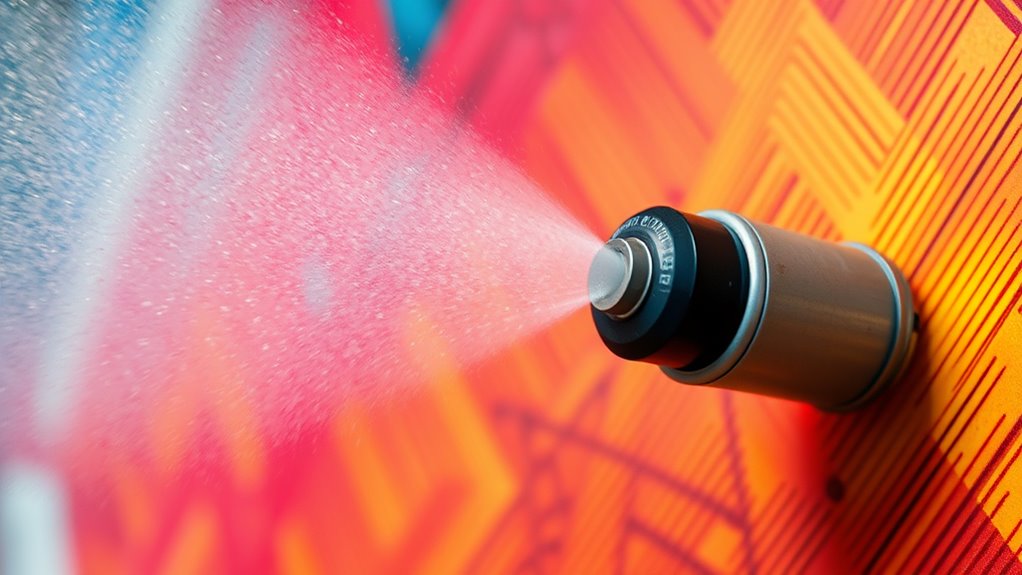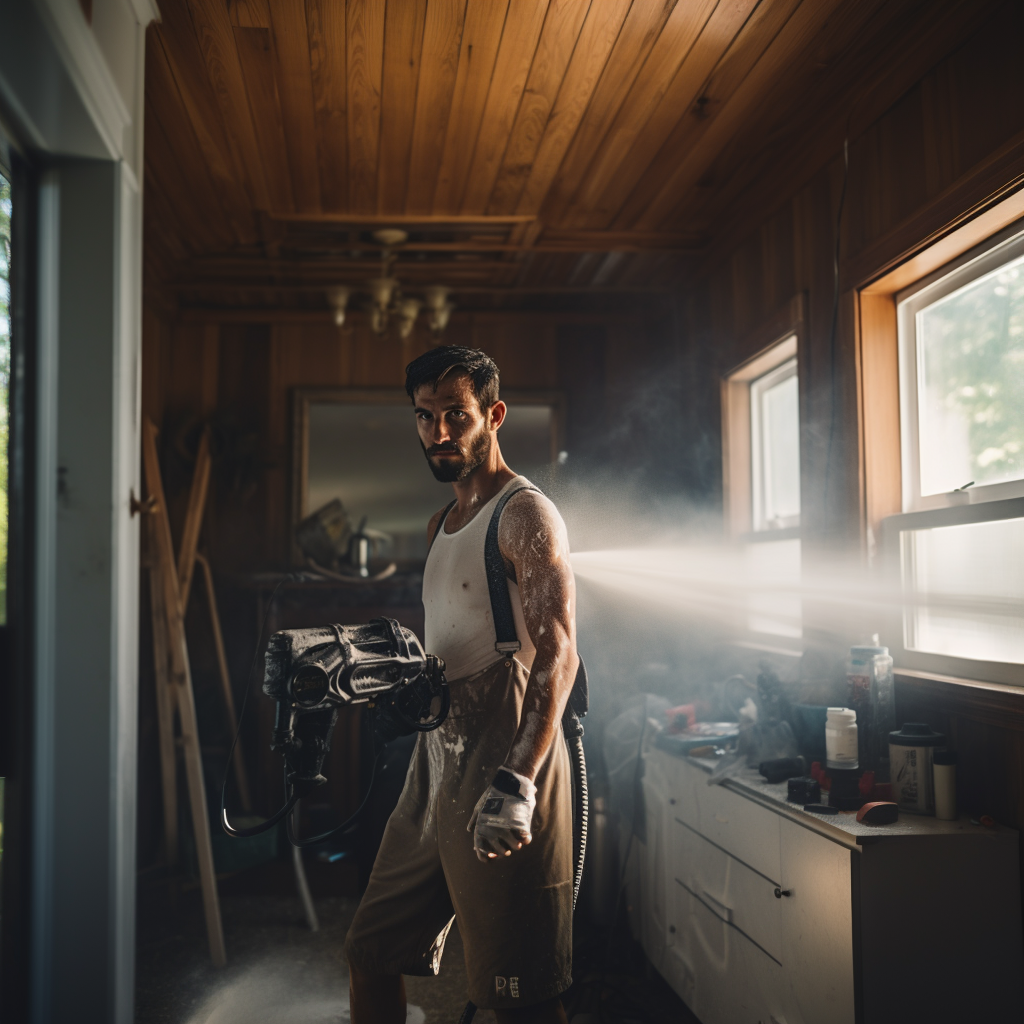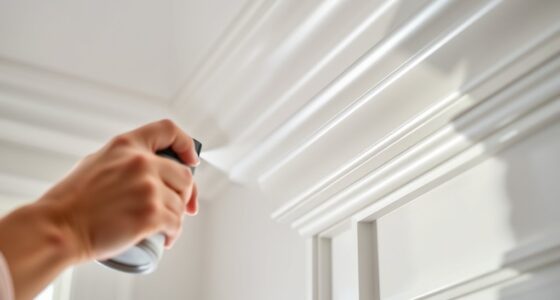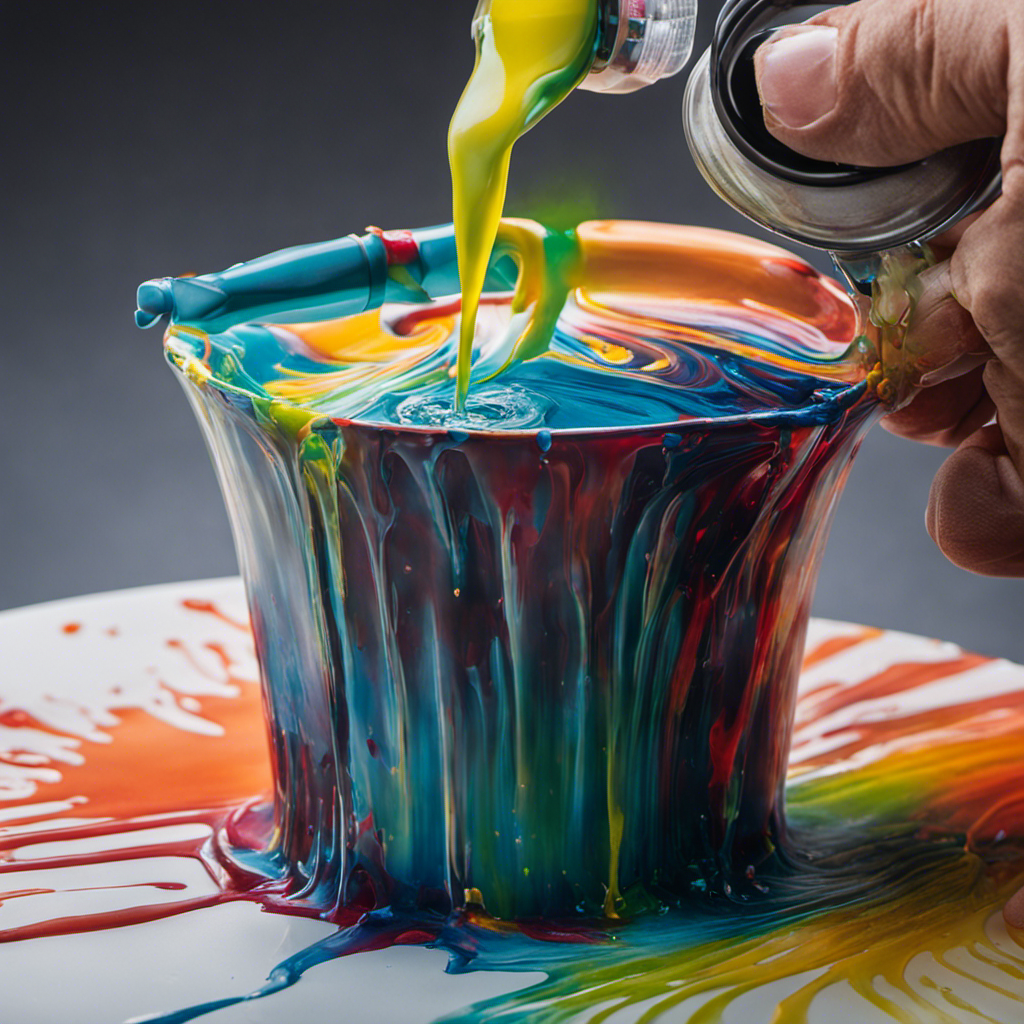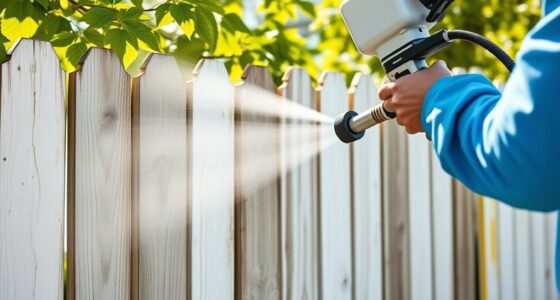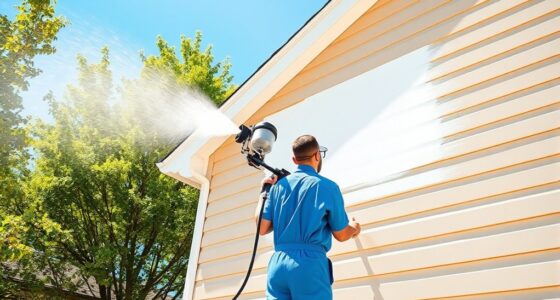To improve your spray technique, focus on maintaining a consistent distance from the surface—too close causes drips, too far wastes material. Move your hand at a steady speed to distribute the paint evenly, avoiding runs or patchy coverage. Incorporate crosshatching by applying light passes in different directions, which creates a smooth finish. Paying attention to these details and adjusting as needed can transform your results; keep going to discover more expert tips.
Key Takeaways
- Maintain a consistent distance from the surface to ensure even spray coverage and prevent pooling or uneven thickness.
- Move the spray gun at a steady, controlled speed to distribute material evenly and avoid drips or uneven layers.
- Use crosshatching by applying multiple light passes in different directions to improve coverage and reduce streaks or patches.
- Regularly clean nozzles and adjust airflow and pressure for optimal atomization and spray consistency.
- Combine proper distance, speed, and crosshatching techniques with practice for a professional, smooth finish.
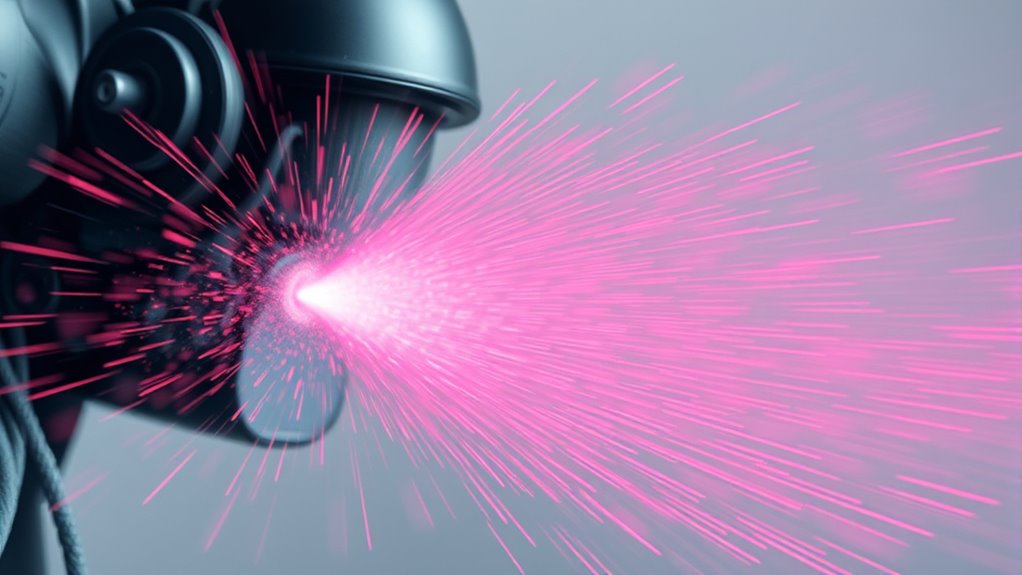
Have you ever wondered how professionals achieve smooth, even finishes when spraying paint or other liquids? The secret lies in mastering spray techniques that optimize airbrush precision and spray consistency. When you focus on these elements, your work becomes more controlled, professional, and flawless. One of the most critical factors is controlling your distance from the surface; staying at a consistent distance ensures even coverage and prevents over-application. Too close, and you risk pooling or uneven thickness; too far, and the spray disperses too widely, reducing control and detail. Maintaining a steady distance allows the spray pattern to flow uniformly, which is essential for achieving a smooth finish.
Consistent distance from the surface ensures even coverage and a smooth, professional finish.
Speed also plays a crucial role in spray techniques. Moving your hand at a consistent pace helps distribute the liquid evenly and prevents buildup or thin spots. Rushing can cause uneven coverage, while moving too slowly might lead to drips or runs. Practice a smooth, steady motion, overlapping each pass slightly to build a uniform layer. This consistency in speed, combined with proper distance, ensures your spray pattern remains even and predictable, contributing to an overall polished look.
Crosshatching is a technique that can considerably improve your spray results, especially when covering larger areas or working with complex textures. By applying multiple light passes in different directions—such as first horizontal, then vertical—you create a more uniform layer and reduce the risk of streaks or uneven patches. Crosshatching also helps you identify areas that need more coverage, allowing you to adjust your technique accordingly. When you adopt this method, you enhance your control over spray pattern and coverage, leading to a more professional finish.
To maximize your results, remember to keep your equipment well-maintained. Clean your nozzle regularly to prevent clogs that can disrupt spray consistency. Adjust the airflow and pressure settings to suit the material you’re spraying; higher pressure can increase atomization, but too much can cause overspray and loss of control. Practice your technique on scrap surfaces first, experimenting with distance, speed, and pattern to find what works best for your project. Over time, you’ll develop a feel for the right balance, enabling you to produce smooth, even coats with precision and confidence. Additionally, understanding the importance of professional spray techniques can elevate your craftsmanship and results.
In essence, mastering spray techniques involves a combination of controlling your distance, maintaining a consistent speed, and employing methods like crosshatching. These practices help you achieve the desired spray consistency and airbrush precision, transforming your work from amateur to professional quality. With patience and practice, you’ll find that your ability to produce flawless finishes improves dramatically, making your projects look polished and well-executed every time.
Frequently Asked Questions
What Types of Spray Equipment Are Best for Different Techniques?
You should choose the right spray equipment based on your technique. For detailed work, a brush might be better, but for even coats, a spray is ideal. Select nozzles carefully—smaller nozzles for precision, larger ones for broader coverage. Adjust your distance and speed accordingly. A good rule is to match your nozzle and spray equipment to the complexity of your technique, ensuring smooth, consistent results every time.
How Do Environmental Conditions Affect Spray Application Quality?
Environmental factors like wind, humidity, and temperature considerably impact your spray application quality. High wind can cause overspray and uneven coverage, while humidity affects how paint dries, potentially causing runs or poor adhesion. Surface temperature matters too; if it’s too hot or cold, paint may not adhere properly or dry unevenly. To achieve a flawless finish, control these environmental factors as much as possible, especially surface temperature, for consistent results.
Can Spray Techniques Be Used on Delicate or Fragile Surfaces?
Yes, you can use spray techniques on delicate materials or fragile surfaces, but you need to be gentle. Adjust your spray distance and speed to prevent damage, applying thin, even coats. Use light pressure and avoid prolonged spraying in one spot. Testing on a small area first helps guarantee the surface won’t be harmed. With careful control, spray techniques can be effective without compromising fragile surfaces.
What Safety Precautions Should Be Followed During Spray Painting?
Think of spray painting like dancing with fire—safety’s your partner. You should always wear protective gear like masks, goggles, and gloves to shield yourself from fumes and splatters. Make certain proper ventilation systems are in place to clear the air and prevent buildup of hazardous vapors. Never rush; keep a steady hand and stay aware of your surroundings. These precautions keep your creative fire burning safely, not flaming out.
How Can I Correct Mistakes or Overspray Effectively?
To correct mistakes or manage overspray, you should act quickly. Use a fine abrasive or sanding sponge to gently remove overspray or errors, then clean the area thoroughly. For small mistakes, lightly feather the paint with a brush or touch-up spray. Keep a steady hand and controlled spray distance to prevent future overspray. Regularly check your work from different angles, and adjust your technique as needed to maintain clean lines.
Conclusion
Now that you’ve mastered crosshatching, adjusting distance, and controlling speed, think of spray painting like riding a bike—balance and timing are everything. I once saw an artist transform a dull wall into a vibrant masterpiece simply by fine-tuning these techniques. Just like learning to pedal smoothly, practice makes perfect. With patience and attention, you’ll turn your spray skills into a powerful tool for creative expression, leaving behind the days of uneven coats and drips.
Franz came aboard the Paint Sprayer Zone team with a background in both journalism and home renovation. His articulate writing style, combined with a passion for DIY projects, makes him an invaluable asset. Franz has a knack for breaking down technical jargon into easy-to-understand content, ensuring that even the most novice of readers can grasp the complexities of paint sprayers.
